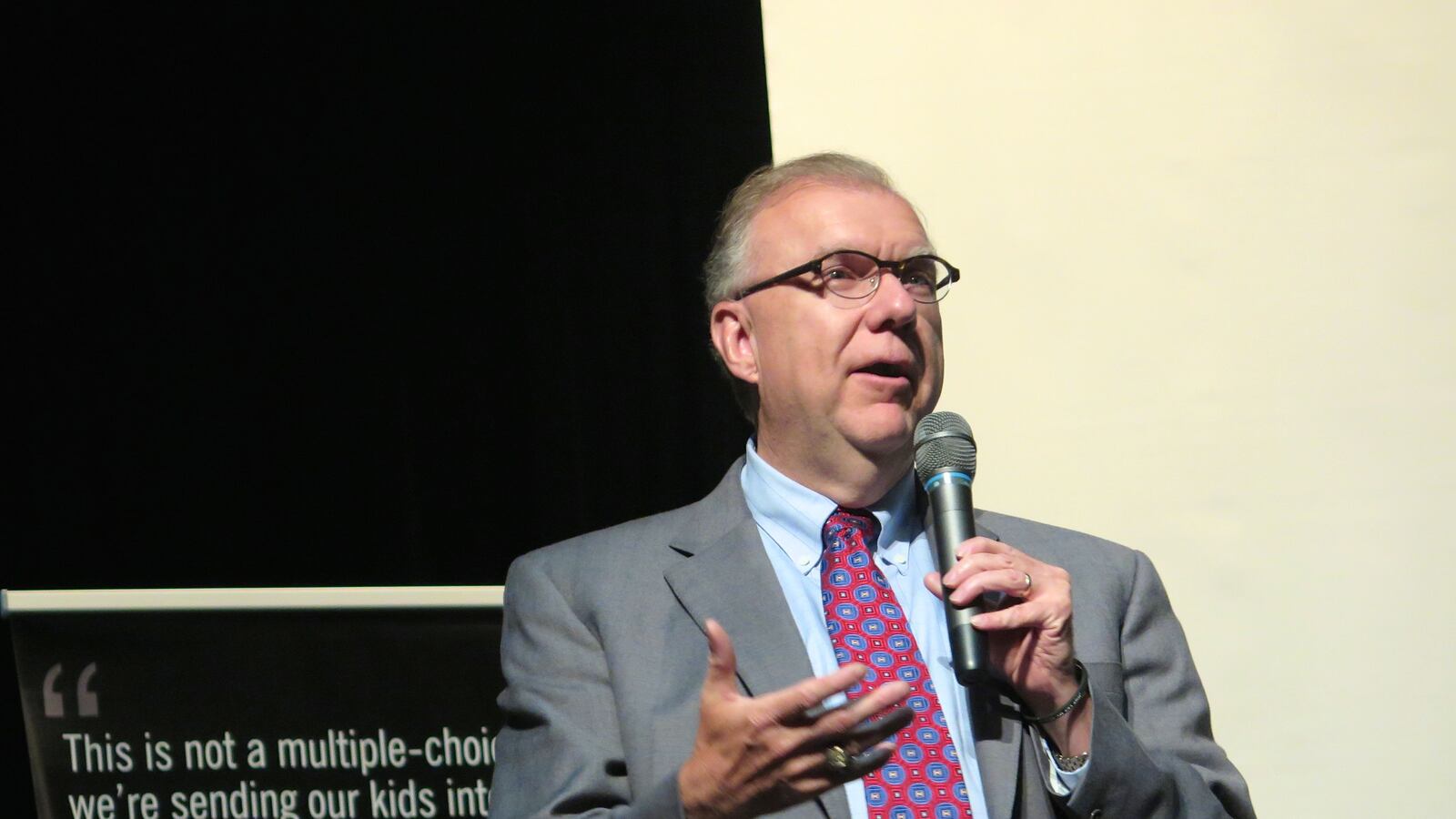Hispanic and African-American male students are less likely to enroll in and more likely to drop out of college when compared to their white peers, according to a new report by the Colorado Department of Higher Education.
The disparity between the percentage of students who graduated from high school in 2013 and enrolled in college the following fall was greatest for Hispanics, the report showed. Hispanic students made up more than one-fourth of graduating seniors, but accounted for less than one-fifth of the students who went to college the following fall.
Many of the state’s K-12 education reform laws passed during that last decade have been aimed at getting more black and Latino students to college. But once those students arrive on college campuses, they’re having a difficult time succeeding, the report found.
Nate Easley, the executive director of the Denver Scholarship Foundation, said this isn’t a surprising revelation.
“Latino students were less likely to enroll in college and less likely to complete it if they enrolled,” Easley said, referring to research his organization completed in 2007. “Black students are more likely to enroll than the national rate but less likely to complete (a degree compared to) the national rate.”
That trend stayed consistent in the most recent report by the CDHE, which studied high school graduates from 2009 to 2013.
Search for your district’s college-going rate in Chalkbeat’s Data Center
The percentage of African-Americans who graduated from high school in 2013 and enrolled in college the following fall stayed roughly the same, accounting for roughly five percent of the total population in both instances. Black students, as well as their Hispanic peers, faced problems once enrolled in college.
About a quarter of Hispanic students had a GPA of 2.0 and were at risk for not graduating or being placed on academic probation. African-American students fared worse. A quarter of them had a 1.7 GPA average.
Additionally, black and Latino students have the overall lowest first-year retention rates.
The bottom line, Easley said, is that students of color are at a disadvantage in Colorado.
“College success is a challenge for minority students,” he said. “Kids who are low-income, first-generation, an ethnic minority are more likely to face social and academic challenges to college graduation and college success than kids who are not.”
The problem is multi-dimensional, Easley said. But a big factor boils down to “cultural capital.” Students from ethnic cultures are less likely to have the money for college and more likely to be a first-generation college student, he said. This means they most likely don’t have the same support network as white students.
“To be successful in college you have to know how to advocate for yourself and you have to know when you need help and where you can go get it,” Easley said. “Kids who are not low-income, first-generation are more likely to have that kind of network than kids who are.”
In an effort to correct the disparity DSF does several things, including working with Denver Public Schools through their Future Centers. By being embedded in 21 high schools, DSF is able to advise students about financial aid and college options.
Another program that aims to reduce these gaps is the First Year Success Program at the Metropolitan State University of Denver. The voluntary program is designed to help first-year students, especially students of color, succeed.
The program uses “learning communities” that offer courses in pairs, which means students are enrolled in at least two classes with the same peer. The communities help students establish a network of peers and faculty members, which can be critical for student success, said Cynthia Baron, acting director of FYS.
“I think it’s especially important for high-risk students or underrepresented students, like African-American and Latino students,” Baron said. “Many of those students come from families where they are the first to attend college. It’s really important for them to have that sense of support. Not just academic support, but social and peer support.”
From fall 2013 to spring 2014, the retention rate for Hispanic students in FYS was about 81 percent. In comparison, Hispanic students at Metro State not in FYS had a retention rate of approximately 68 percent.
“This program makes a huge impact in terms of not just access for students who may not traditionally go to college, but also in terms of retention and graduation,” she said.

